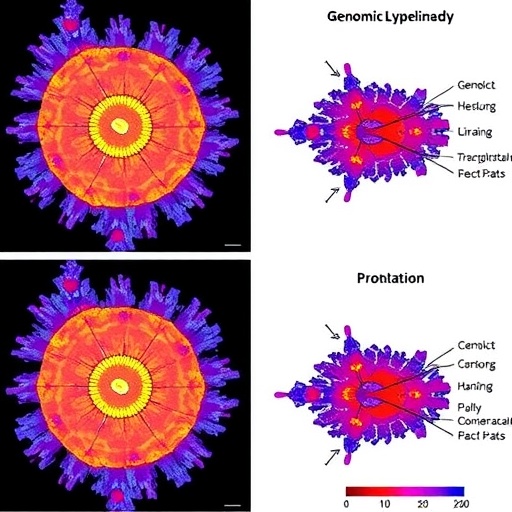Rhabdomyosarcoma, a cancer made up of cells that normally develop into skeletal muscles, is the most common soft tissue cancer in children. If it is detected early and localized in certain areas, rhabdomyosarcoma is usually curable with traditional therapies like surgery, radiation and chemotherapy. However, these treatments are fraught with side effects, especially for children.
A recent study points to a new treatment strategy that takes advantage of the body's own immune response.
Over the past decade, immunotherapy has become an important part of treating some cancers effectively and with fewer side effects than traditional therapies. One immunotherapeutic approach is oncolytic virotherapy, in which a virus is used to target cancer cells specifically. Oncolytic viruses infect and kill malignant, but not normal, cells.
In the new study, researchers from Nationwide Children's Hospital used a combination of immunotherapies in a mouse model of rhabdomyosarcoma.
In addition to oncolytic virotherapy, the team also blocked the signaling of programmed cell death protein (PD)-1, which mediates the suppression of T-cells.
"Other researchers have recognized that if we can block the PD-1 checkpoint and unleash the T-cells a bit more, they might fight cancer better," says Timothy Cripe, MD, PhD, chief of Hematology, Oncology and Blood and Marrow Transplantation at Nationwide Children's and senior author of the study.
"We thought that if a virus infection brings in more T-cells, and the PD-1 blockade allows those cells to fight cancer cells, then maybe the two therapies will work better together."
Combining the two immunotherapies delayed tumor growth and enhanced overall survival in a mouse model of rhabdomyosarcoma, says the study's first author, Chun-Yu Chen, PhD, research scientist in the Center for Childhood Cancer and Blood Diseases at The Research Institute at Nationwide Children's.
"We used a mouse model to demonstrate that when we combine oncolytic therapy with PD-1 blockade, we see a better therapeutic outcome compared to either of the therapies individually," says Dr. Chen.
The researchers say the combination therapy is so effective because it marshals more of the T-cells that attack infections and tumors to the site of the cancer without increasing the counterbalancing, regulatory T-cells that suppress immune attacks.
Both oncolytic virotherapy and PD-1 blockade are FDA-approved for treating cancer; this new study provides preclinical data to support combining them in pediatric cancer patients.
Dr. Cripe, also a principal investigator at in the Center for Childhood Cancer and Blood Diseases at The Research Institute, says his team is working with a company to determine whether they will move forward with clinical trials. They are also interested in figuring out how differences in immunogenicity might affect the success of the combination treatment.
"Our paper gives us some clues as to predictive biomarkers of who might respond best to this type of treatment," says Dr. Cripe, also a professor of Pediatrics at The Ohio State University College of Medicine. "If we can identify patients who have a tumor that is recognized by the immune system better, we can individually select patients in which this combination treatment will work best.
"It has been shown that immunotherapy works for some adult cancers; the question is, what impact will it have on childhood cancers?" says Dr. Cripe. "We are fortunate to be at an institution that has all the resources that allow us to study this in the lab and in the clinical setting and find out its full potential."
###
Reference:
Chen C-Y, Wang P-Y, Hutzen B, Sprague L, Swain HM, Love JK, Stanek JR, Boon L, Conner J, Cripe TP. Cooperation of oncolytic herpes virotherapy and PD-1 blockade in murine rhabdomyosarcoma models. Scientific Reports. 2017 May 24;7(1)2396.
Media Contact
Danielle Warner
[email protected]
614-355-0492
@NationwideKids
http://www.NationwideChildrens.org
http://dx.doi.org/10.1038/s41598-017-02503-8
############
Story Source: Materials provided by Scienmag



